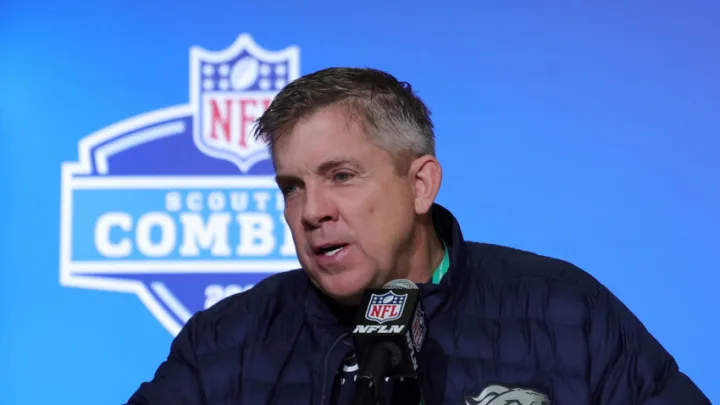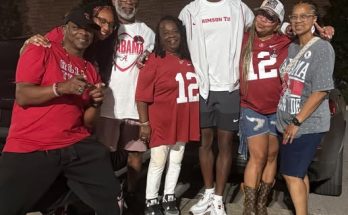The Chicago Bears are a team in the midst of a rebuild. After years of struggling to maintain consistency and competitiveness, they now stand at a critical juncture, poised for major decisions during the 2025 NFL Draft. While the team has made strides under general manager Ryan Poles, the Bears’ long-term success hinges on their ability to execute a solid draft strategy—one that addresses key positions while staying true to their core identity. The key to a successful future for the Bears lies in their ability to be physical in all aspects of the game: from offense to defense and everything in between.
In this article, we will explore why the Chicago Bears need to prioritize physical football during the 2025 NFL Draft, outlining why the team’s long-term success is reliant on upgrading key positions with tough, physical players. We will break down what this means in terms of strategy, team needs, and potential draft picks, providing an in-depth analysis of why physicality should be at the forefront of the Bears’ draft strategy.
A History of Physical Football in Chicago
The Chicago Bears have a rich history in the NFL, marked by legendary players, iconic moments, and a storied tradition of physical, hard-nosed football. From the “Monsters of the Midway” in the 1980s to the tough defensive squads of the early 2000s, the Bears have always prided themselves on playing tough, gritty football. However, over the past decade, the team has strayed from that identity, especially in terms of the physicality of their roster.
In recent years, the Bears’ defense has been more about scheming and athleticism than the brute force and physical dominance that defined their heyday. On offense, there has been an emphasis on versatility and speed, but the lack of physical presence has hurt their ability to dominate the line of scrimmage. The result has been a team that has struggled to close out games, particularly against more physical, well-coached teams.
As the Bears continue their rebuild, there is a clear need to return to their roots—prioritizing physicality, toughness, and grit in all facets of the game. The 2025 NFL Draft offers the perfect opportunity to do just that.
Why Physical Football Matters in Today’s NFL
Physical football remains crucial to success, especially for teams that want to contend for championships. While the NFL has evolved in terms of pace, passing, and offense-heavy strategies, the foundation of the game is still built on physicality. There are several reasons why the Bears should prioritize physical football during the 2025 Draft:
1. Winning at the Line of Scrimmage
At the core of physical football is the ability to dominate the line of scrimmage. Whether it’s the offensive line controlling the trenches or the defensive line imposing its will on the quarterback, the line of scrimmage remains the most critical aspect of the game.
For the Bears, this has been an area of both promise and frustration. While the offensive line has shown improvement in recent years, there is still a noticeable lack of depth and strength across the unit. The defensive line, despite the presence of talented players like Roquan Smith and Eddie Jackson, has often struggled to impose its will against stronger offensive lines and against the run.
By prioritizing physicality in the 2025 NFL Draft, the Bears can fortify these trenches with players who have the strength, tenacity, and skill to dominate. This will set the tone for both sides of the ball and help the Bears play a brand of football that matches their historical identity.
2. Establishing a Balanced Offense
One of the most important elements of physical football is the ability to establish a run game that can wear down the opponent. The Chicago Bears have a dynamic young quarterback in Justin Fields, who brings an element of dual-threat capability that few in the NFL can match. However, even Fields’ extraordinary skill set will be limited if the Bears cannot establish a reliable and effective ground game.
A physical running back, along with a beefed-up offensive line, could transform the Bears’ offense. A strong running game will allow the Bears to control the clock, protect their defense, and create more opportunities for Fields to make plays in the passing game. For Fields, a workhorse back who can move the pile and open lanes will provide the security he needs to reach his full potential.
Additionally, a physical offense that can dictate the pace of play will allow the Bears to wear down opposing defenses, particularly in the fourth quarter. This style of play is one that the Bears’ fanbase can relate to, and it’s one that will keep the team competitive throughout the 2025 season and beyond.
3. Physical Defense for Pressure and Tackling
In recent years, the Bears’ defense has relied heavily on zone schemes and coverage assignments. While this approach has worked in certain situations, a lack of physicality has shown when facing offenses that run the ball effectively or when opponents need to convert short-yardage plays. To become a Super Bowl contender, the Bears’ defense must be able to get after the quarterback and shut down the run.
A physical defense can disrupt offensive plays from the first snap. A defensive front that can collapse the pocket and force quarterbacks to make erratic throws is an essential part of any contending team. The ability to stop the run, shed blocks, and deliver powerful hits in the secondary are all important aspects of physical football that the Bears must prioritize.
By drafting physically imposing players—particularly at positions such as linebacker, defensive line, and cornerback—the Bears can become a team that not only gets to the quarterback but also creates chaos in the backfield, forcing turnovers and playing aggressive, downhill football.
4. Protecting the Quarterback and Running Back
In addition to controlling the line of scrimmage, physical football is about keeping your key players safe while they make plays. For Fields, who has shown flashes of brilliance but also suffered from poor protection in the past, having a physical offensive line that can keep defenders at bay is critical.
Likewise, running backs need physical blockers who can open holes and clear paths for explosive runs. Without physicality in the trenches, the Bears will continue to struggle to create consistent offense. A powerful offensive line and fullback, combined with powerful running backs, would elevate the running game and keep Fields from taking unnecessary hits.
Key Positions to Address in the 2025 NFL Draft
With physical football in mind, there are several positions the Bears should target in the 2025 NFL Draft to build a tougher, more resilient team. These positions are key to establishing dominance at the line of scrimmage, controlling the run game, and creating pressure on opposing quarterbacks.
1. Offensive Line
The Bears’ offensive line has shown improvement but still needs to add more power and depth. Given Justin Fields’ athleticism and dual-threat capabilities, it’s essential to build an offensive line that can protect him while also creating holes for the running game. A powerful left tackle, a mauling guard, or an agile center with the ability to get to the second level could make a huge difference.
The 2025 Draft offers several offensive linemen with the potential to start immediately. Adding physicality and nastiness to the trenches should be a priority.
2. Running Back
A workhorse running back who can grind out tough yards and finish games with physicality is essential for the Bears’ offense. The Bears have a few promising options at the running back position, but they need a true bell-cow back who can impose their will. A powerful, yet nimble, back could complement Fields’ skill set and help solidify the Bears’ ground game.
Players like Jahmyr Gibbs (Alabama) and Zach Charbonnet (UCLA) are examples of the kind of physical, all-around talents that could be available in the middle rounds, giving the Bears a reliable option to share the workload with Fields.
3. Defensive Line
Physicality is crucial for both the offensive and defensive lines, and the Bears need to prioritize this area of the team. A defensive line that can pressure the quarterback and stop the run is key to establishing dominance on defense. Whether it’s an edge rusher who can bend around the corner or a defensive tackle who can push the pocket, the Bears need to bring in big, strong players who can control the line of scrimmage.
4. Linebacker
A linebacker corps that can step up and be physical in the middle of the field is another priority. The Bears have promising pieces like Roquan Smith, but they need additional support to create a tough, aggressive defense. Drafting a linebacker with the size and tackling ability to make an impact in both the run game and the passing game will give the Bears a linebacker unit that can dominate.
5. Cornerback
Physicality isn’t just about size—it’s about playing tough in coverage. The Bears need to bring in a cornerback who isn’t afraid to press receivers at the line of scrimmage and be aggressive in run support. A physical cornerback will also be able to hold up against the NFL’s best wide receivers, providing more stability to the Bears’ secondary.
Prioritizing Physical Football for the Future of the Bears
The Chicago Bears are at a crossroads, and the 2025 NFL Draft offers an incredible opportunity to reset and reestablish the kind of team that their fans have come to expect—one that plays physical football, dominates in the trenches, and imposes its will on opponents. The foundation of success in the NFL starts with physicality, and the Bears must prioritize toughness on both sides of the ball.
From upgrading the offensive line to adding a punishing running back and bolstering the defense with power players, the Bears must focus on building a team that embodies the physicality and grit that defined the franchise in its glory days. If GM Ryan Poles can focus on these areas in the 2025 NFL Draft, the Bears will be well on their way to returning to relevance and contending for championships in the near future. It’s time for the Bears to get back to their roots and draft with physical football as their guiding principle.



